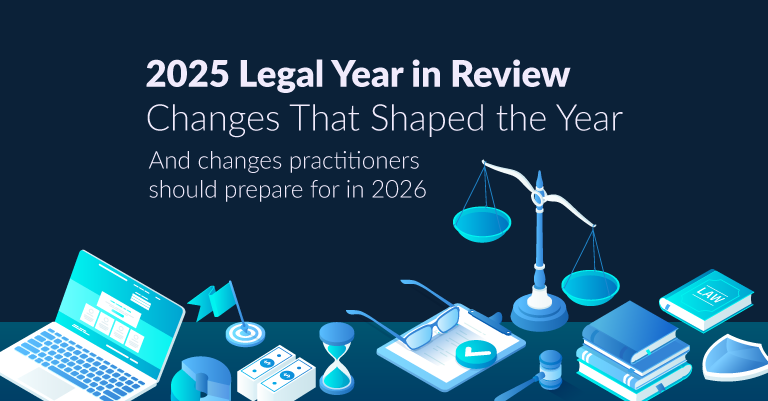As 2025 draws to a close, Australia’s legal landscape reflects another year of reform focused on accountability, fairness, and technological adaptation. From mandatory merger notifications and franchising...
Authored by Allison Lawrence, Senior Legal Writer, Technology & Innovation. Australia’s online safety framework is about to reach a major turning point. On 10 December 2025, the new age-assurance obligations...
Authored by Hayley Tam , Head of Built Environment & Disputes, Practical Guidance, and Research by Feng Emily Lizzio, Paralegal, Practical Guidance. Climate change is rapidly reshaping our physical environment...
Introduction The pressure on organisations to embrace Artificial Intelligence (AI) technology while delivering greater efficiency seems like it has never been higher than in today’s business environment...
As AI becomes more common in legal practice, many professionals are discovering an unexpected challenge: their tools don’t always work together. A typical day for an Australian lawyer might involve switching...

The COVID-19 pandemic has transformed the administration of justice in Australian courts and tribunals, necessitating a comprehensive overhaul of the protocols, procedures and norms of etiquette on which the courts and the legal profession have relied for decades. These changes have been sudden and challenging, but the profession and the judiciary have adapted quickly and have seized on opportunities to enhance access to justice and improve efficiency. It is relatively clear that the conduct of litigation in Australia may never be the same.
Current impacts on the conduct of civil litigation
Courts and litigants have historically harboured reservations about conducting trials, or parts of trials, electronically or by audio-visual link. While some jurisdictions, such as the High Court and the Federal Court, have routinely held virtual hearings and taken evidence remotely, litigation has overwhelmingly been a process conducted on paper and in person. It is not uncommon for litigants to travel from interstate to attend hearings in courtrooms filled with shelves lined with folders containing volumes of documents.
The sudden spread of COVID-19 has forced the courts to adapt rapidly, and it appears that the judiciary and the profession as a whole have risen to the challenge. Civil hearings in the Supreme Court of Victoria, for example, are conducted by Webex, Skype or Zoom using electronic documents exclusively. Recent litigation concerning the Black Lives Matter Rally in Sydney was conducted urgently in the Supreme Court of New South Wales by audio visual link to enable the Court to render a swift decision.
Likewise, mediations and other forms of alternative dispute resolution (which have, traditionally, proceeded on the premise that participants must convene in the same location) are now being conducted virtually. For example, mediations in the Federal Court of Australia, the Family Court of Australia, the Federal Circuit Court of Australia and the Victorian Civil and Administration are being conducted online through the Immediation dispute resolution platform, which mimics the structure and process of a traditional mediation in a virtual environment.
An eye to the horizon – what the future may hold for dispute resolution
It is impossible to accurately foretell the long-term impact of COVID-19 on civil litigation and dispute resolution in Australia, but some trends and ramifications appear obvious.
In the short to medium term, the devastation wrought by COVID-19 is likely to prove a wellspring of litigation across Australia, including:
- Class actions arising out of negligence in the Aged Care sector – indeed, a representative proceeding against St Basil’s Home for the Aged in Victoria has already commenced;
- Corporate class-actions, such as share-holder initiated disclosure claims, which may flow from specific incidences of COVID-19 within an organisation or from the ongoing economic uncertainty and instability that is likely to persist for years to come;
- Work health and safety class actions across all sectors;
- Corporate and personal insolvency;
- Negligence actions against hospitality and travel service providers, such as restaurants, hotels and cruise ship operators;
- regulatory enforcement proceedings against corporations and officers;
- Unfair dismissal and genuine redundancy disputes; and
- Commercial tenancy and franchising disputes.
Amidst the gloom and uncertainty, however, there is cause for optimism about the future of dispute resolution in Australia. COVID-19 has forced the hand of the legal profession, including litigation practitioners, to adopt remote working and flexible working practices, which may lead to happier, less-stressed litigators.
The pandemic also brings with it the opportunity for the judiciary to revolutionise the way litigation is conducted. It is likely that many of the temporary measures introduced in the wake of COVID-19 will persist beyond the pandemic and improve efficiency, enhance access to justice and reduce the carbon footprint of litigation. The days of flying across Australia to attend a creditor’s meeting, interlocutory application or a mediation may soon be over. It may become standard for urgent hearings outside of court hours to be conducted virtually, and it can be expected that electronic trials will become the rule, rather than the exception.
It is likely that the rules and regulations governing the procedure for litigation across all jurisdictions will be amended to accommodate this shift in the way litigation is conducted. LexisNexis’ suite of proven litigation-focussed analytical content and forthcoming Dispute Resolution Practical Guidance module are there to assist practitioners engaged in civil litigation in navigating the changes to come .
Contact your Relationship Manager for more information about our upcoming Dispute Resolution module or visit our Practical Guidance website.




